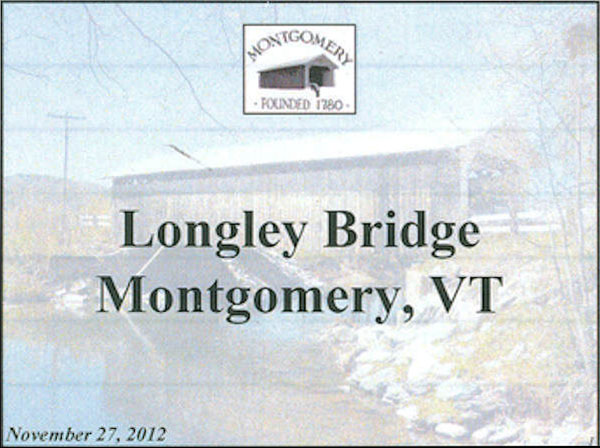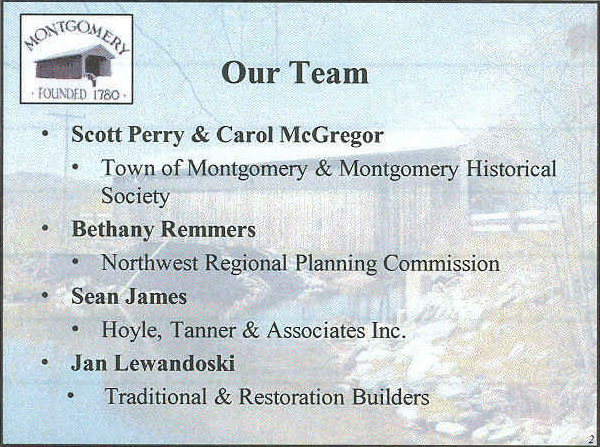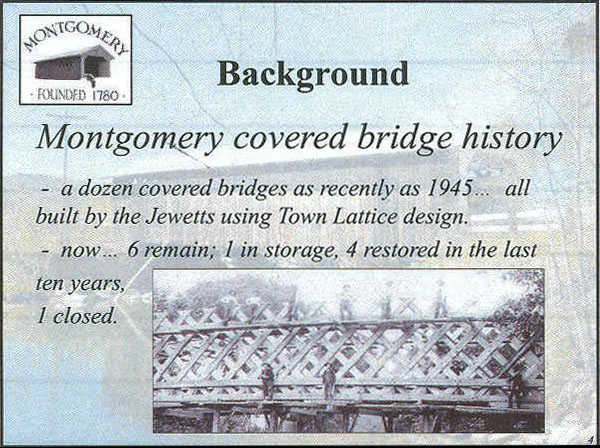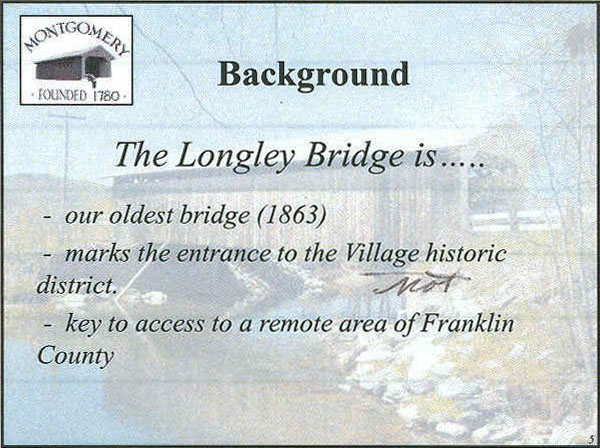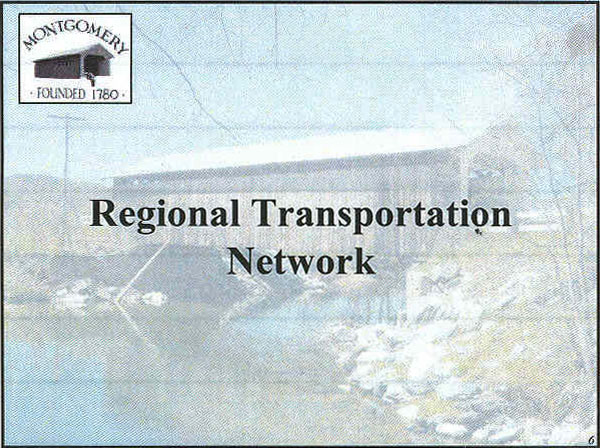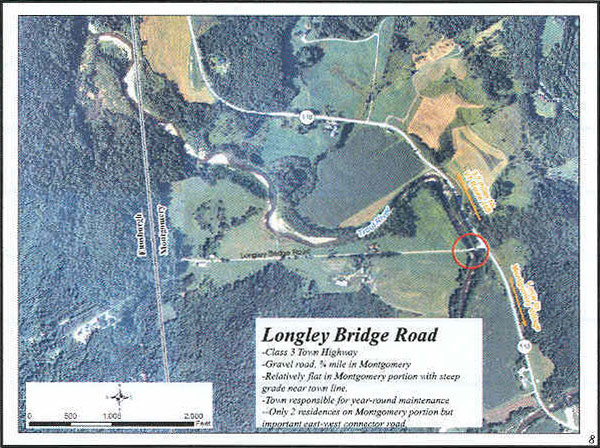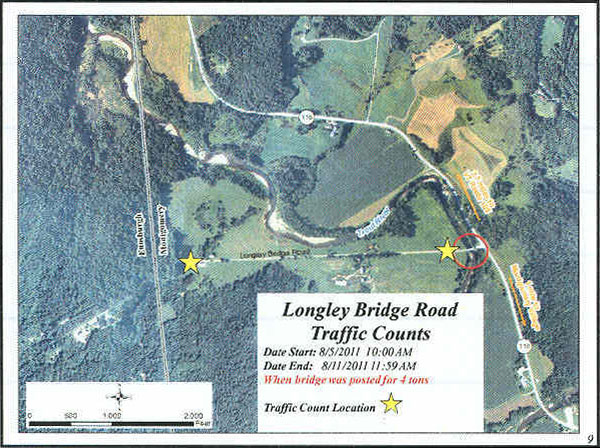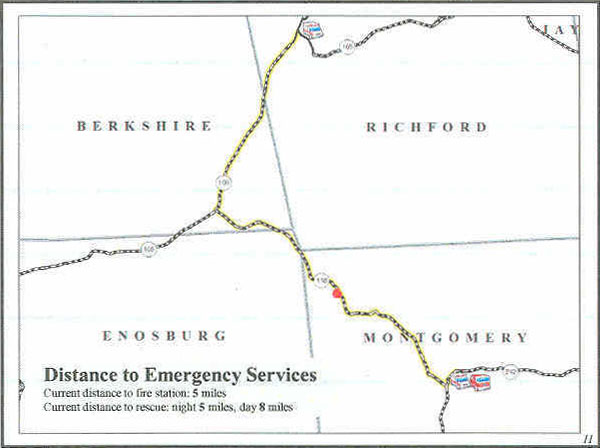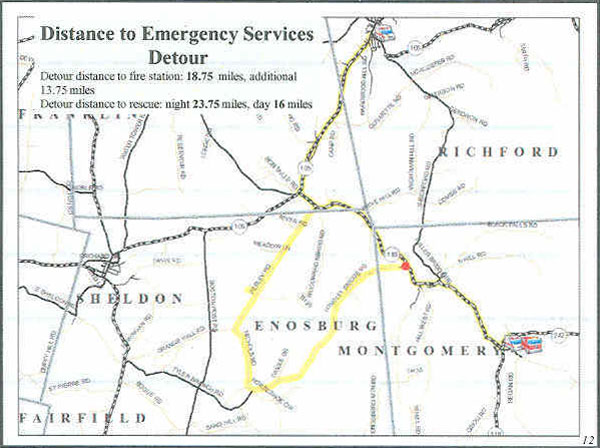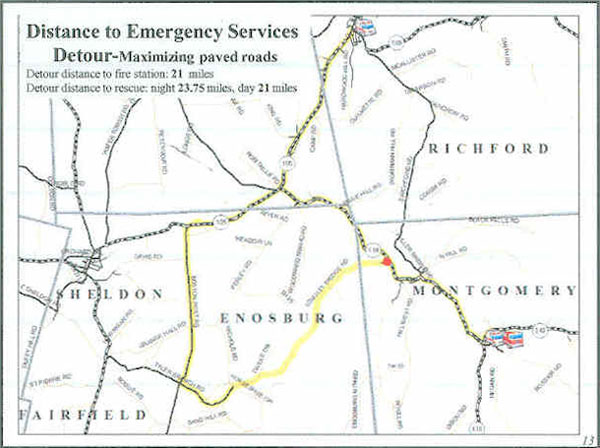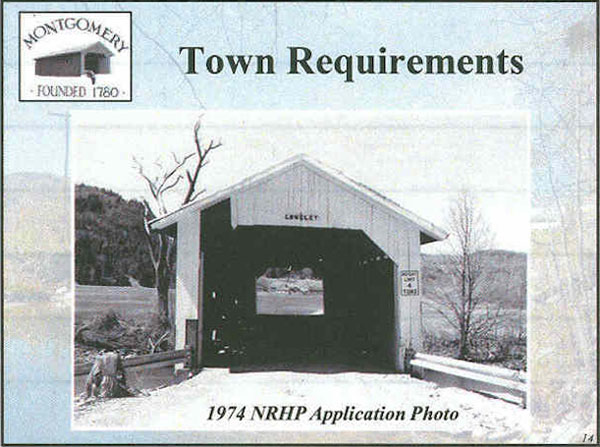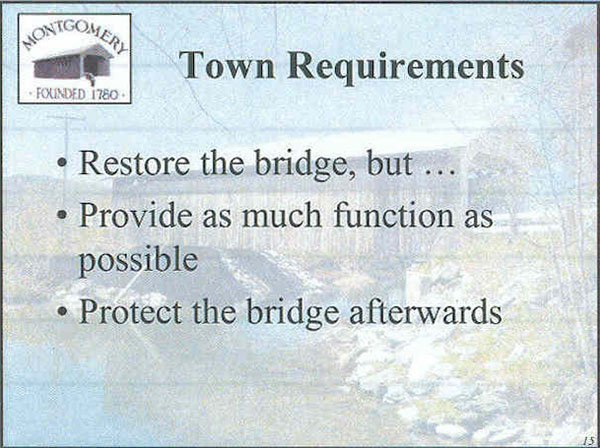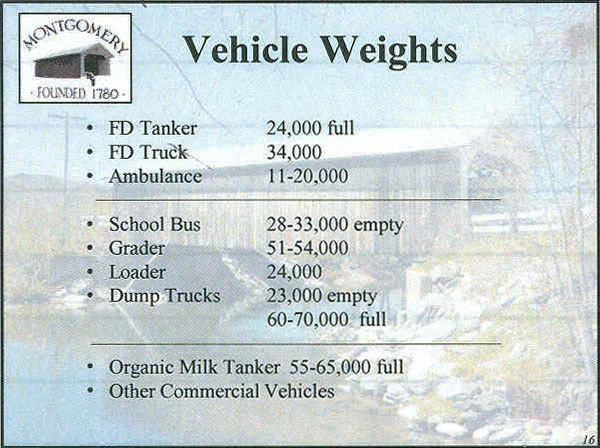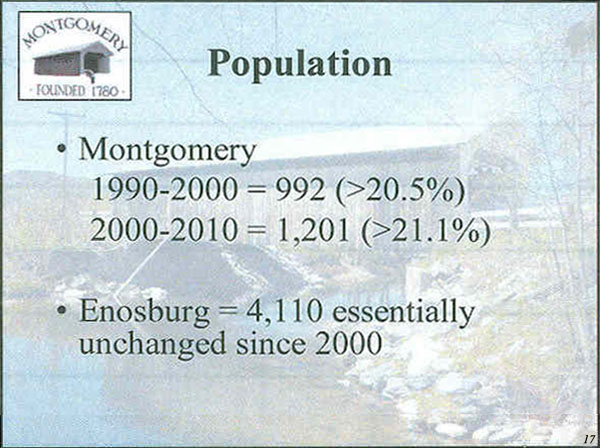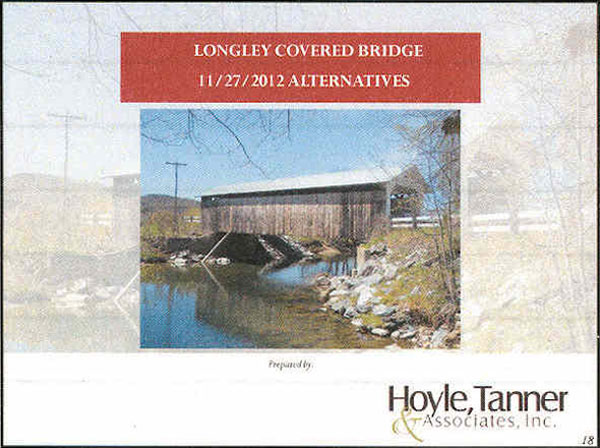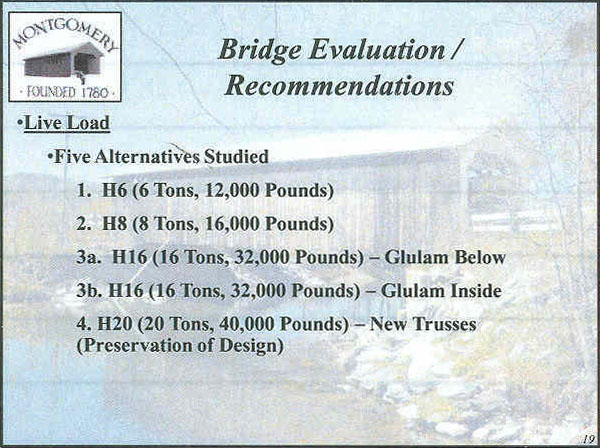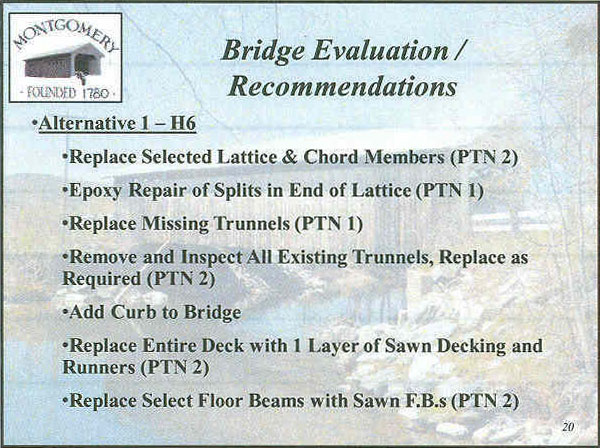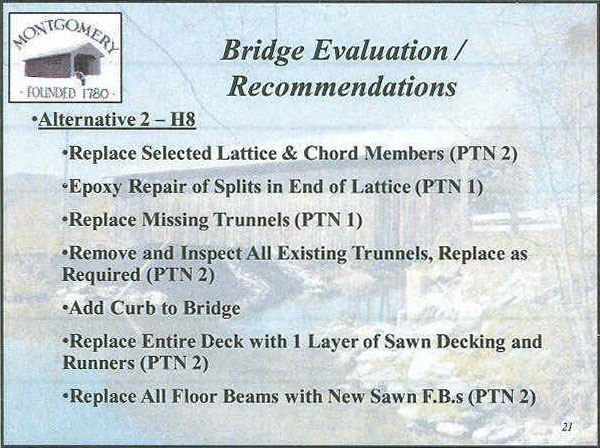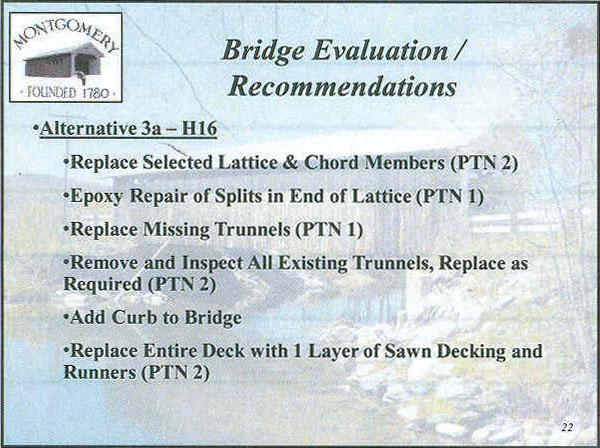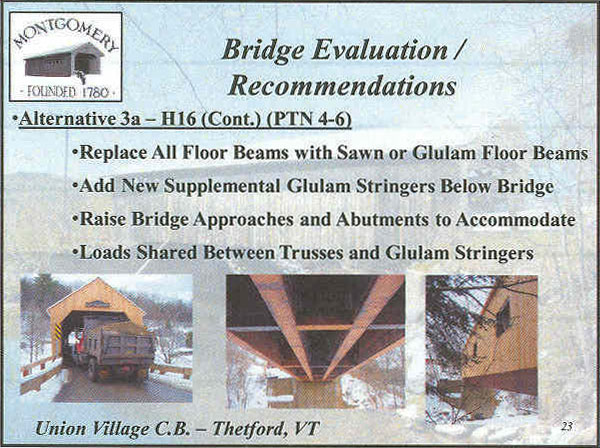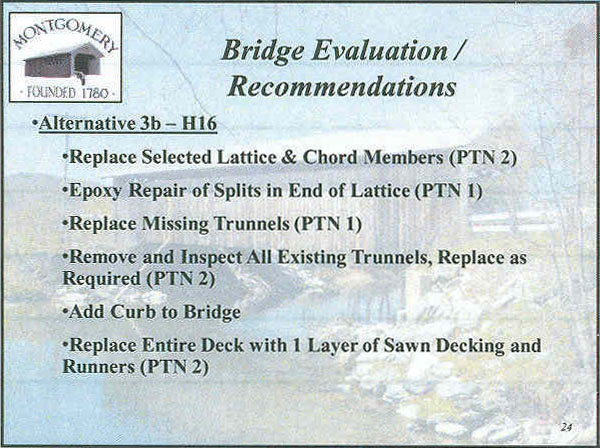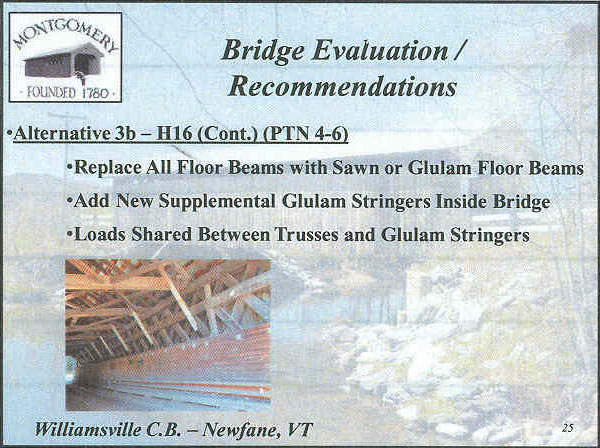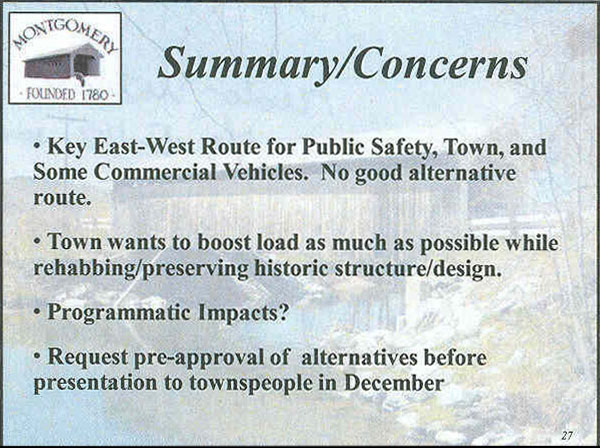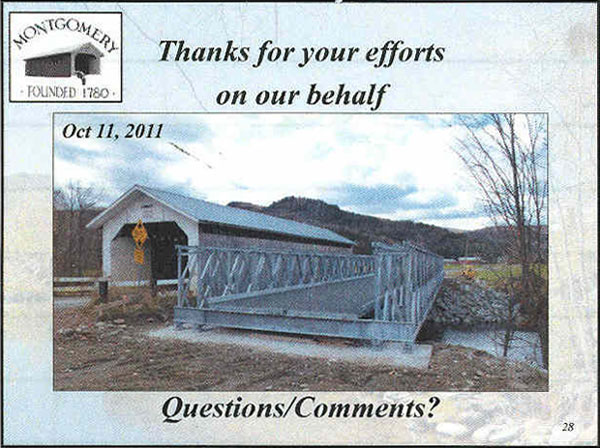
Historic Bridge Committee Meeting
November 27, 2012 for:
Montgomery: Longley Covered Bridge
Attendance:
- VTRANS:
- J.B. McCarthy
- Mike Hedges
- Wayne Symonds
- John Weaver
- Doug Bonneau
- Scott Newman
- Kaitlin O'Shea
- Kevin Russell (project manager)
- Pam Thurber
- Bob McCullough (Historic Bridge Program)
- Preservation Trust of Vermont:
- Eric Gilbertson
- Hoyle-Tanner, Consulting Engineers:
- Sean James
- Town of Montgomery:
- Scott Perry
- Carol McGregor
- Northwest Regional Planning Commission:
- Bethany Remmers
- Vermont Covered Bridge Society:
- Joe Nelson
- Restoration and Traditional Builders Consultant:
- Lewandowski
-
Introductory Report: J.B. McCarthy began the meeting with an invitation to Scott Perry and Bethany Remmers to provide reports concerning the transportation routes dependent upon the bridge, length and locations of detours for emergency service, traffic volume, availability of alternative sites for a new bridge and access road, and town requirements.
The town's very thorough report made it clear that fire and emergency service vehicles would be forced to make substantial detours of 18 or 23 miles to reach the active farm currently served by the Longley Bridge, and that those detours would require use of roads that are not always in passable condition. The town also reported that property owners in the vicinity of the bridge are not interested in conveying land to the town to create a new access road and bridge. The town clearly wants to preserve the historic bridge but also wants to make it as functional as possible and to develop the project in a way that will offer future protection for the bridge.
-
Discussion: Discussion then narrowed to consideration of the two viable methods of achieving the load rating required to make the bridge functional for the town's objectives: (1) the introduction of glu-laminated girders as a secondary structural system, accompanied by disassembly of the existing lattice trusses, replacement of members that have deteriorated beyond the point of repair (estimated to be about 50% - subject to inspection during disassembly) and reassembly; or (2) demolition of the existing covered bridge and construction of a new Town lattice truss, with retention of the existing roof structure.
Alternative 1: Would achieve a rating of H16 (32,000 lbs) and would require replacement of all existing floor beams with glu-laminated floor beams and would also require raising the bridge on its abutments, with a corresponding raising of the approaches, to accommodate the depth of the glu-laminated girders placed beneath the bridge.
Committee members considered the possibility of inserting the glu-laminated girders through the bridge as a way to avoid changes to the bridge elevation, reduce potential danger from flooding, and reinforce the trusses, thus increasing the load capacity beyond 32,000 lbs. The girders would also add the benefit of protecting the trusses. However, that alternative was regarded as too visually intrusive.
Concerns about Alternative 1 centered on the probability that overloaded vehicles would continue to use bridge as they have in the past, with no realistic method for enforcing a posted limit. Given potential overloading, questions remain concerning whether the budget assigned to this project would be adequate for a forty-year period, and whether the town would again be forced to make repairs during that period.
Additional concerns focused on the design, geometry, and size of the truss members as inadequate for the span.
Alternative 2: Offers the benefit of increasing the load capacity to 40,000 lbs, while also preserving the roof structure.
The obvious disadvantage is that it requires destruction of the historic bridge and is inconsistent with three specific provisions of the Historic Covered Bridge Preservation Plan, including (1) the principle objective of preserving material integrity of the historic bridge to the maximum extent possible; (2) Priority Treatment No. 1, which specifies that the deterioration of a large number of bridge elements should never justify the replacement of any single member capable of being repaired; and (3) the requirement that the preservation treatments should be applied in order of priority to the maximum extent possible before considering treatments lower in priority. Here, Alternative 1 is Priority Treatment No. 4, is feasible, and restricts consideration of other treatments lower in priority.
Conclusion: Town officials will discuss the two alternatives with members of the town and will report to the committee at a later date.

